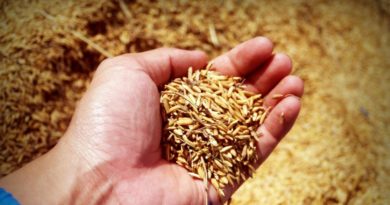Tips for gardening in all four seasons
Spring and summer are the seasons most gardeners look forward to all year. Spring because it is the main planting season, and summer because you start to see the annuals you planted earlier in the year blooming.
While it is hard to argue that these are not the most fruitful times of the year for gardeners, there is no reason to believe that you can’t get outside to work on your plants regardless of the season. For gardeners who want to enjoy their hobby through the year, here is a brief guide to seasonal gardening.
Spring
As the weather warms, the ground is going to start to thaw, signaling the beginning of the planting season. You may head outside to trim branches with your electric chainsaw, but once the snow is gone, you also have a great opportunity to get your garden ready for planting. You can start in the early part of the season by preparing the soil with tasks like cleaning your garden beds, fertilizing, and removing weeds.
Once your soil is ready, you can start planting your annuals and perennials. A few weeks before the last frost, you can plant the hardy perennials and some cold weather vegetables. After the last frost has passed, you can then plant your annuals and any remaining perennials and vegetables.
If you’re planning on growing climbing vegetables like cucumbers or beans, you may want to build stakes that they can hold on to. Consider using a tool fitted with oscillating tool blades to make the job quick and easy.
Summer
As the summer heat starts to rise, it is not the end of planting, but you will have to take the conditions into account. The high temperatures can dry the soil out, so you will need to stay on top of watering your plants. Water your ground before planting, and even once new plants have been placed, make sure to provide the roots with enough water.
Most experts would also recommend doing most of your summer planting during June. The heat of July and August can be tough for plants that have been newly placed or transplanted, so it is better to get things in the ground early in the summer.

Fall
As the weather starts to cool down, fall can be another planting season. After you remove any of the expired annuals that are in your garden, you can start planning space for bulbs that bloom in fall. Once again, you just need to make sure to do most of your fall planting early in the season. You obviously need to plant before the ground freezes, but you also want to give your plants enough time take root before the temperatures get too cold.
Aside from planting, you also need to get your garden ready for winter. Apply a fall fertilizer to provide your plants with the nutrients they need to make it through the colder season. Instead of carrying heavy bags across your yard, consider using a lightweight wheelbarrow to make the job easier. You should also remove any weeds that have grown during the summer and till the soil to provide oxygen to the roots.
Winter
You won’t be doing any planting during the winter, but this is an important season for maintaining your garden and preparing for the next growing season. You should inspect your garden for any signs of disease or pest infestation. After it snows, you may want to remove some of the snow from the plants and their beds.
Another important point is to try to manage the soil temperature. Quick drops in temperature can be bad for your plants, and you also want to prevent a lot of repeated thawing and freezing because it can result in the soil shifting. One of the best ways to do this is to lay a winter mulch in your garden. The mulch can help to insulate the soil, and this will protect the plants from rapid temperature changes.
While you may see the most results from your garden in the spring and summer, that doesn’t mean you can’t enjoy your space in the colder months. This guide will help you keep your garden healthy and looking its best, no matter the season.



